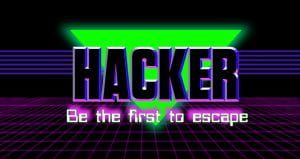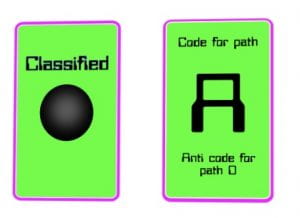Defining the Meaning of a Gift
One of our exercises required us to think of one our favorite gifts that we’ve received. I wrote about a gift that my friend (who is also in design foundations) got me for Christmas. It was a small gift but meaningful to me because she payed attention months before when I slightly mentioned liking someone’s monkey keychain and she remembered. So I knew that I wanted to give my recipient something revolving around something important to them which eventually came to fruition through the bike.
Reaching out
Reaching out and getting to know the gift recipient was the first step of getting an idea of what to do.
From what I gathered from our conversation Liam seems like a very down to Earth guy who finds importance in the little things in life. I highlighted some things that I noted like his aesthetics, his heavy love for biking and WHY he loves biking, music interests, the fact that he’s a senior and is losing his last year, etc.
Human Experience Using Design to Compose a Song
The quote that I picked was: “The only important thing about design is how it relates to people” — Victor Papanek
I chose this quote because I wanted to challenge myself to focus on the purpose of design — human experience, and not only my recipient’s personal wants and interests, but making a final product that was designed in a non representational way. My goal was to represent his interests WHILE focusing my design on the ‘unseen’ aspect so it seemed natural. I used intervals and chord progressions to craft a song that was inspired more by design than making a song.
I wanted the song to be warm and inviting
- The VII-i-III-VII chord progression that I chose is a common progression for songs that sound hopeful yet serene and not too overly exciting and common in pop music like the chord progression I-V-vi-IV (similar to the chord progressions in the song ‘Riptide’ by Vance Joy)
- The song is well balance with a higher pitched melody on bells/piano/electric piano and a low/ deep base chord structure. I added in a few elements to accent some moments in the song
- As far as the intervals, a lot are scales that stepping up or down by major seconds. There are a fair share of major 3rd steps. Major seconds are very positive sounding (like the notes ru-dolph in ‘Rudolph the Red Nosed Reindeer’ and the beginning few notes in ‘Happy Birthday’) and as are major thirds (like the first two notes of ‘When the Saints’)
- A few times (to create a more distinct melody) I would include a perfect 4th from C-F but then paired it with a minor 2nd to end that phrase. A perfect fourth is engraved within us as a hopeful interval (here comes the bride) While a minor second is typically a more evil sounding note interval (the duh-duh in Jaws), I find that sandwiching it between a perfect 4th and a minor 7th is an interesting way to create a melody that kind of represents ‘hope in the unknown’.
- the bridge of the song has a sort of rumpy-march feel that reminded me of the rhythms they used to use in cartoons when someone snuck up on them. I felt like it made the mood more complex and added representation of curiosity and the unknown.
Above is my first draft of when I began to pluck the notes out for the melody. Both versions have lyrics technically, but that’s because when I read music or write it I find it easy to remember the rhythm and inflection that I want when I have something to attach the melody to like words. The words,however, are nonsense and don’t have anything to do with the project.
I want to say that above is my final draft. Although I am a little rusty on rhythmic composition, but it was helpful to put everything down on a staff, regardless of whether the measures were counted perfectly or not. Some things changed while editing and revising the audio version that I did not write onto sheet music.
First Audio Draft:
Above is the first audio draft that I made on GarageBand. I was not happy with this version of the track and the more that I messed with it, the worse it got. It did not have very good rhythm and I recorded a lot of the parts separately because I thought it was easier, but it ended up just taking away a lot from the rhythm and flow of the song. So I decided that design is supposed to be hard, so it can appear easy to it’s user; so I gave up on that version and began the journey of trying to record the melody perfectly within one take on the tiny GarageBand IPad piano/keyboard.
Final Audio:
I was finally satisfied with an audio that brought out all the aspects that I was intending like hope and peace.
Packaging
While the gift that I designed is the song above, I wanted to ‘package’ this song in a video that was simple yet interesting. I created a simple animation of the biker’s POV while on a peaceful stroll (on a warm sunny day, which my recipient mentioned in his ‘perfect day’). The animation has the same loop and every once in a while is interrupted by a passing flower or a bird. I kept these loops simple and didn’t add too many extra ones because I really wanted to focus on finding peace through observing the little things in life, which seemed to be important to Liam.
Animation Creation Time Lapse:
I also have a title page (which I won’t insert to save space, but it can be viewed in the final video form) that I kept as a still image with a moving title to further capture peace and serenity.
Final and Concept Statement
“The only important thing about design is how it relates to people” — Victor Papanek
Using a muted color scheme with some simple animation creates a calming video to ‘wrap’ the gift which is the song. The meaning of the song and video draws attention to observing the little things in life; this is conveyed through a steady melody (with a few parts that stick out) and a video paired with it that has some small moments of objects passing by. Relating to the quote, the song uses chord progressions and patterns that are well known to catch the human ear’s attention. With hints of the obvious bike, the video shows a both literal representation of what the recipient enjoys, but also includes his reason for loving bike riding — finding peace through observation.

















